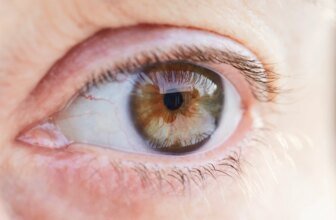Trump’s 2024 gains in New Jersey hang over November’s race for governor
The surprising inroads that Donald Trump made in traditionally Democratic nonwhite areas of New Jersey in 2024 have added an unpredictable variable into this year’s governor’s race.
For Republican Jack Ciattarelli, they offer the tantalizing prospect of new support that eluded him when he narrowly lost the last governor’s race in 2021 — but also the possibility that he’s chasing fool’s gold if it turns out Trump’s gains were unique to him and nontransferable to other Republicans.
For Democrat Mikie Sherrill, there’s the hope that a return to the previous norm for Democratic candidates will halt further erosion of the state’s blue tint — but also a concern that there may be an additional and deeper challenge involving turnout.
While Trump did lose the state to Kamala Harris last year, his 6-point margin of defeat represented a massive step forward from the 16-point drubbing he suffered in 2020. This amounted to his second biggest state-level improvement anywhere in the country.
It was keyed in particular by dramatic growth in Trump’s support among Hispanic voters. Overall, 22% of New Jersey’s adult population is Hispanic, and there are 29 municipalities in the state that are majority Hispanic. Most have typically been core Democratic areas, but in 2024 Trump slashed his margin of defeat to levels practically unheard of for a Republican and flipped several of them outright.
At 36 points, Trump’s net improvement in the city of Perth Amboy marked his single biggest jump in any New Jersey municipality with at least 1,000 residents. Paterson and Passaic were second and third, respectively. Overall, Trump lost New Jersey’s majority-Hispanic communities by 20 points last year, down from 46 points in 2020.
There are an additional 82 municipalities that, while not majority Hispanic, are majority nonwhite. In these communities, which tend to have large Black or Asian American populations (or both), Trump also made strides last year, though not at the same scale: He cut a 42-point deficit in 2020 down to 29.
When he ran against Democratic Gov. Phil Murphy in 2021, Ciattarelli was wiped out in heavily nonwhite areas. To grasp how transformative Trump-level gains would be for his candidacy, consider that his overall statewide loss to Murphy was by 3.2 points, or 84,286 votes. But if he had won Trump’s share of the vote in every majority-nonwhite municipality, it would have brought Murphy’s margin all the way down to 0.3 points, or just over 8,000 votes.
Of course, for Ciattarelli, attaining those gains is easier said than done. Trump won support from many first-time and infrequent voters, people who tend to participate only in presidential races. There have been few significant elections nationally so far in 2025, but there are some signs that the energy that boosted Trump in nonwhite areas has gone missing for the rest of his party.
And even in 2024, with his name at the top of the ballot, Trump’s nonwhite support didn’t automatically attach to his fellow GOP candidates. For example, Trump carried New Jersey’s 9th Congressional District, which is 43% Hispanic, even as a Democrat won its open House seat.
Ciattarelli is certainly pushing to make inroads, and making measurable progress is imperative for him. This is because of the obstacle that Trump poses to his candidacy elsewhere in the state, particularly its affluent, white-majority suburbs. These are places that have soundly rejected Trump but where Ciattarelli performed leaps and bounds better four years ago. Trump, of course, was a former president then, but now that he’s back in the White House, Ciattarelli may have trouble building on that 2021 success.
Densely populated Hudson County, which is anchored by Jersey City and contains a collection of small and midsize cities just across from New York City, looms as a key battleground. More than 40% of its residents are Hispanic, and in three of its municipalities (Union City, West New York and North Bergen), Hispanics make up more than 70% of the population. Trump lost Hudson by 28 points last year, down from 46 points in 2020. Ciattarelli lost it by 48.
In Hudson, strong machines are a staple of the political culture. While the main county Democratic organization and the most powerful local machine are both squarely behind Sherrill, dissident forces see an opportunity in Trump’s breakthrough and have aligned themselves with Ciattarelli, setting the stage for a fascinating Election Day mobilization war.
This gets to a challenge that Sherrill and Democrats face. Beyond reasserting their party’s traditional advantage in nonwhite New Jersey, there’s also the matter of turnout levels. It’s one of the major reasons Ciattarelli was able to put a scare into Murphy in 2021.
Gubernatorial elections in New Jersey always attract far fewer votes than presidential ones. But the drop-off is uneven. Overall, turnout for the 2021 governor’s race was 57% of what it had been in the previous year’s presidential contest. But it was far lower than that in nonwhite areas. Of the 20 largest municipal-level turnout drops in the 2021 election, all but one came from an overwhelmingly nonwhite community.
This pattern held in just about all majority-nonwhite communities. So while Murphy did roll up the kinds of margins Democrats are accustomed to in these places, the impact was diluted. In fact, if turnout rates had been equalized — that is to say, if every municipality in the state had turned out at the same 57% level compared to 2020 — then Murphy’s 3.2-point victory would have swelled to a much cozier 6.4 points.
It’s the one-two punch that Sherrill dreams of: thwarting Ciattarelli’s bid for new nonwhite votes, then burying him in an avalanche of high turnout. Of course, just like with Ciattarelli’s own hopes of replicating Trump’s gains, it’s something far easier said than done.
Tags: politic connectz








